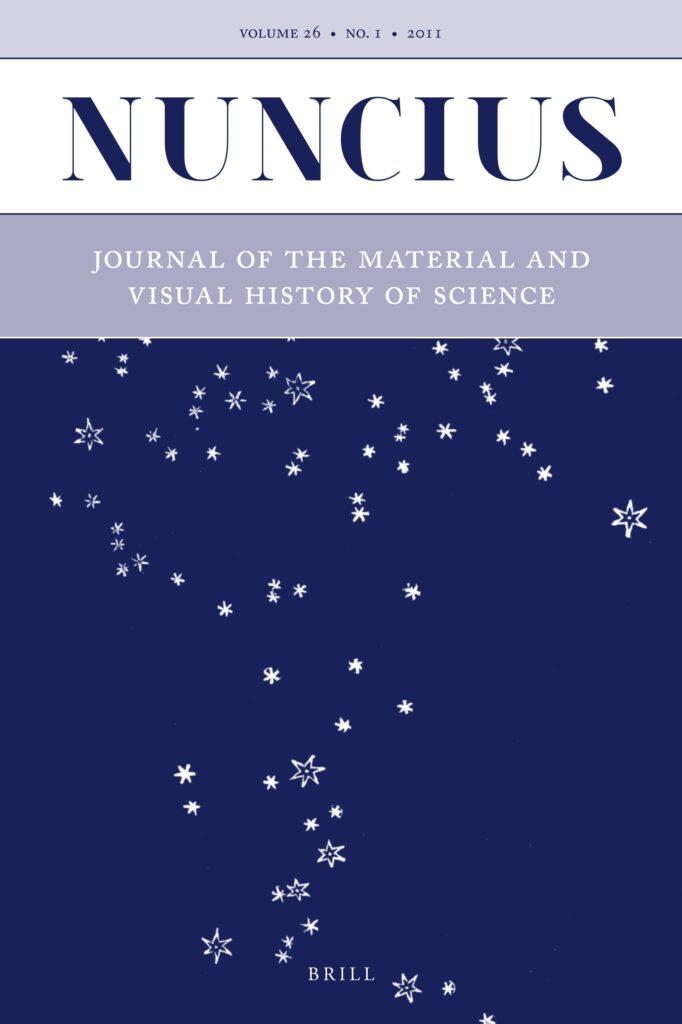
International Perspectives on the Florentine Edition of Apollonius’ Conics
The Case of Michelangelo Ricci (1661)
Alessandro Tripepi, Nuncius, 2023, 20 pp.
In 1661 Giovanni Alfonso Borelli published his edition of the three hitherto lost books belonging to the treatise on Conics by the Hellenistic mathematician Apollonius of Perga. The long and complex editorial operation is here reconstructed drawing on an unpublished document which had not been redacted within the Florentine circles that promoted the editorial initiative, but rather in the Roman circles which provided indispensable support to the venture. The examined letter, written by the Roman intellectual Michelangelo Ricci to prince Leopoldo de’ Medici, allows us to assess the significance of the effort made by a large a team involving numerous scholars experts in geometry and philology; and it allows us also to emphasise the important international dimension of a work that—from its genesis to its dissemination—has been able to connect the whole Continent.
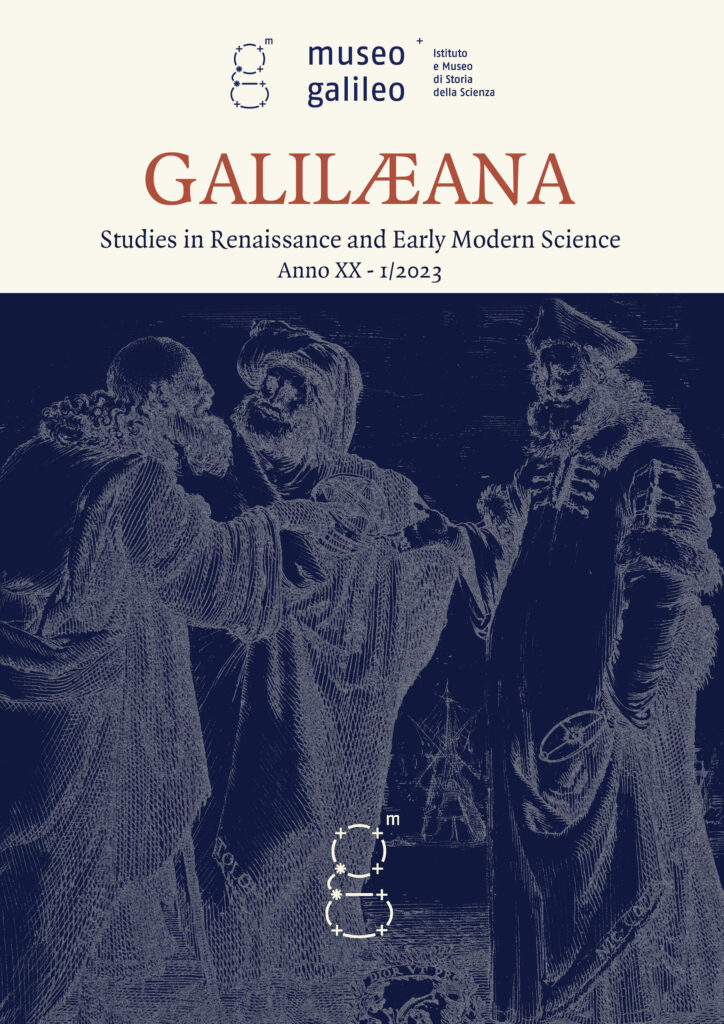
Between matematici and architetti d’acque: Vincenzo Viviani, Galileo’s legacy, and hydraulic engineering
Francesco Barreca, Galilaeana, 2023, 32 pp.
For a long time, Vincenzo Viviani has been regarded by historians in the light of his devotion to Galileo. However, while saying that Galileo had a great influence on Viviani might seem to be an understatement, it should not be forgotten that after Galileo’s death Viviani carved out a career of his own, and that he devoted almost all his life to a specific field – engineer-ing – which often forced him to relax his allegedly strict Galilean beliefs. In particular, his apprenticeship under the guidance of Baccio del Bianco and the years he spent as an assistant engineer for the Capitani di parte Guelfa (before being appointed as Primo Ingegnere) allowed him to become a member of the narrow circle of versatile craftsmen who place themselves halfway between the matematici and the architetti d’acque. This circumstance contributed to shape both Viviani’s peculiar approach to hydraulic engineering and his role in the process of institutionalisation of Galilean science.
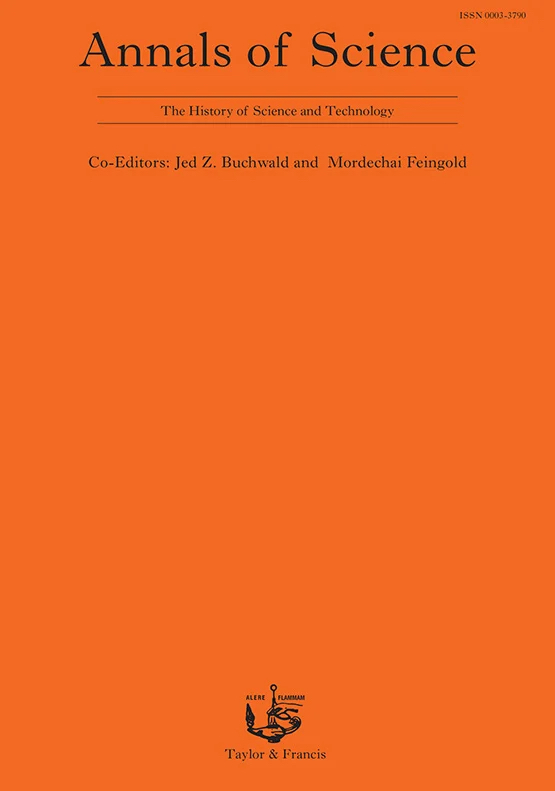
Establishing an experimental agenda at the Accademia del Cimento: Carlo Rinaldini’s book lists
Giulia Giannini, Annals of Science, 2023, 31 pp.
Information on the origins of the Accademia del Cimento is extremely limited. Almost all of the surviving correspondence relating to the year before the Academy began its activities variously concerns print culture. Lists of books (read, studied, purchased, and researched), handwritten notes on old or new publications, vernacular translations of edited passages, and inquiries about new works punctuate the archive. The study of these lists and of the relationship between reading practices and ones related to annotation and knowledge production leads to a reinterpretation of certain aspects of the Accademia del Cimento, suggesting the pursuit of a more flexible agenda. Through the analysis of some book lists, this contribution aims to shed light on the presence in Florence of interconnected groups of scholars, common epistemic practices, and a kind of methodological unity centred on the sharing of materials and agreement concerning the need to subject theories to experimental verification.
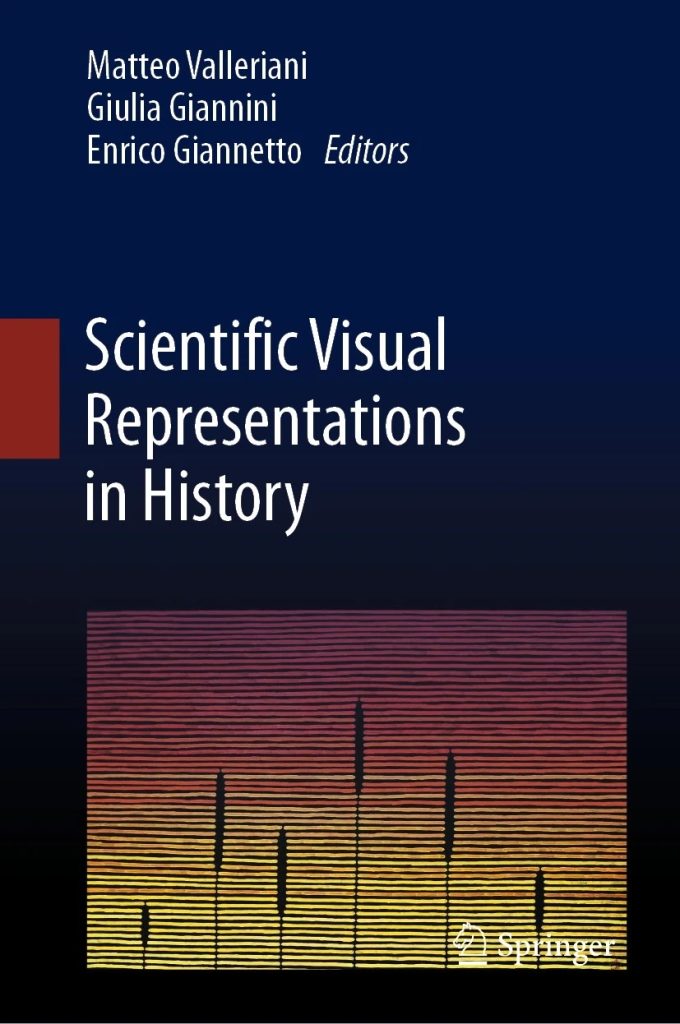
SCIENTIFIC VISUAL REPRESENTATIONS IN HISTORY
Edited by Matteo Valleriani, Giulia Giannini and Enrico Giannetto, Springer Cham, 2023, pp. 360.
This book explores continuity and ruptures in the historical use of visual representations in science and related disciplines such as art history and anthropology. The volume collects historical reflections concerned with the use of visual material, visualization, and vision in science from a historical perspective, ranging across multiple cultures from antiquity until present day. The focus is on visual representations such as drawings, prints, tables, mathematical symbols, photos, data visualizations, mapping processes, and (on a meta-level) visualizations of data extracted from historical sources to visually support the historical research itself. Continuity and ruptures between the past and present use of visual material are presented against the backdrop of the epistemic functions of visual material in science. The function of visual material is defined according to three major epistemic categories: exploration, transformation, and transmission of knowledge.
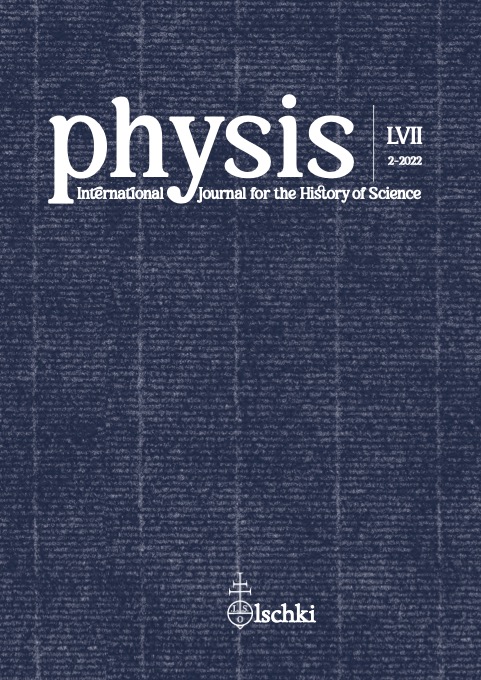
GIOVANNI ALFONSO BORELLI AND THE BOOKS OF OTHERS:
A CONTRIBUTION TO THE RECONSTRUCTION OF BORELLI’S LIBRARY
Giulia Giannini, Physis, LVII, 2, 2022, pp. 475-514
This work aims to supplement and expand the reconstruction of Giovanni Alfonso Borelli’s library. By relying on the ex libris displayed on the title page of some volumes preserved at the Biblioteca Nazionale Centrale in Rome, 241 volumes originally be-longing to Borelli have been identified. The list significantly integrates the one presented by Baldini in 1996 by not only roughly doubling the number of titles, but also incorporating areas of study that were left completely uncovered. The paper is part of a broader research on the Accademia del Cimento and Print culture and belong to a special issue on “Giovanni Alfonso Borelli: Contexts and Networks in 17th-Century Italy” edited by Giulia Giannini and Federica Favino.
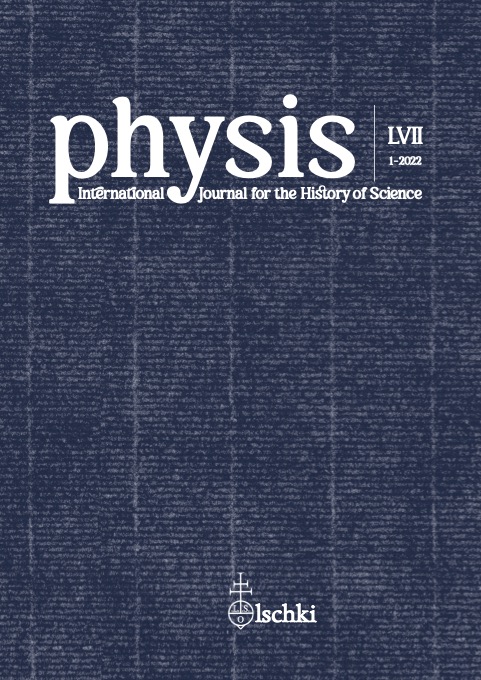
Towards a Computational History of Science : Limitations and Perspectives of an Emerging Research Approach
Giulia Giannini, Physis, LVII, 1, 2022, pp. 245-258
Data science has recently emerged as a multi-disciplinary field of research where statistics, data analysis, machine learning and their related techniques are combined in a systematic way to support understanding of actual phenomena concerned with data. The growing power of storage infrastructures and the consequent availability of large amount of data opened up unprecedented opportunities to support the specification of ad-hoc data-driven approaches and tools for a number of application fields, such as biology, medicine, economy, politics, and history. In historical studies of science and knowledge, the use of data-science solutions is gaining more and more attention and the scientific debate is more topical than ever.
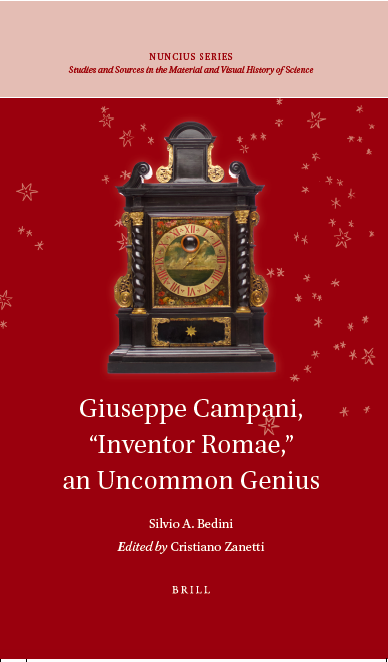
GIUSEPPE CAMPANI, “INVENTOR ROMAE,” AN UNCOMMON GENIUS
Silvio A. Bedini Edited by Cristiano Zanetti, Brill, NUNCIUS SERIES, Studies and Sources in the Material and Visual History of Science, Volume 8, Leiden 2021, pp. 862.
Giuseppe Campani, “Inventor Romae,” an Uncommon Genius is a major contribution to the history of seventeenth-century clockmaking, practical optics, astronomy, and early modern science and technology in general. It provides fresh material to the scholar interested in currently relevant research fields, such as power and knowledge, patronage of scientific and technological activities, technological innovation and invention, competition among inventors and producers of scientific instruments, progress of optical instruments and discovery, circulation of knowledge, and more, not last, the role of women in early modern technolgical activities. This work provides unique insights into the scientific landscape of baroque Rome and its links to a broader European scene: the Campani brothers— Matteo (1620-ca. 1687), Pier Tommaso (1630-ca. 1700) and Giuseppe (1635-1715)—were at the core of a thriving activity of technological and scientific innovation and self-promotion that involved popes, the Sun King, and other rulers of baroque Europe, in first place the Medici and their Accademia del Cimento.
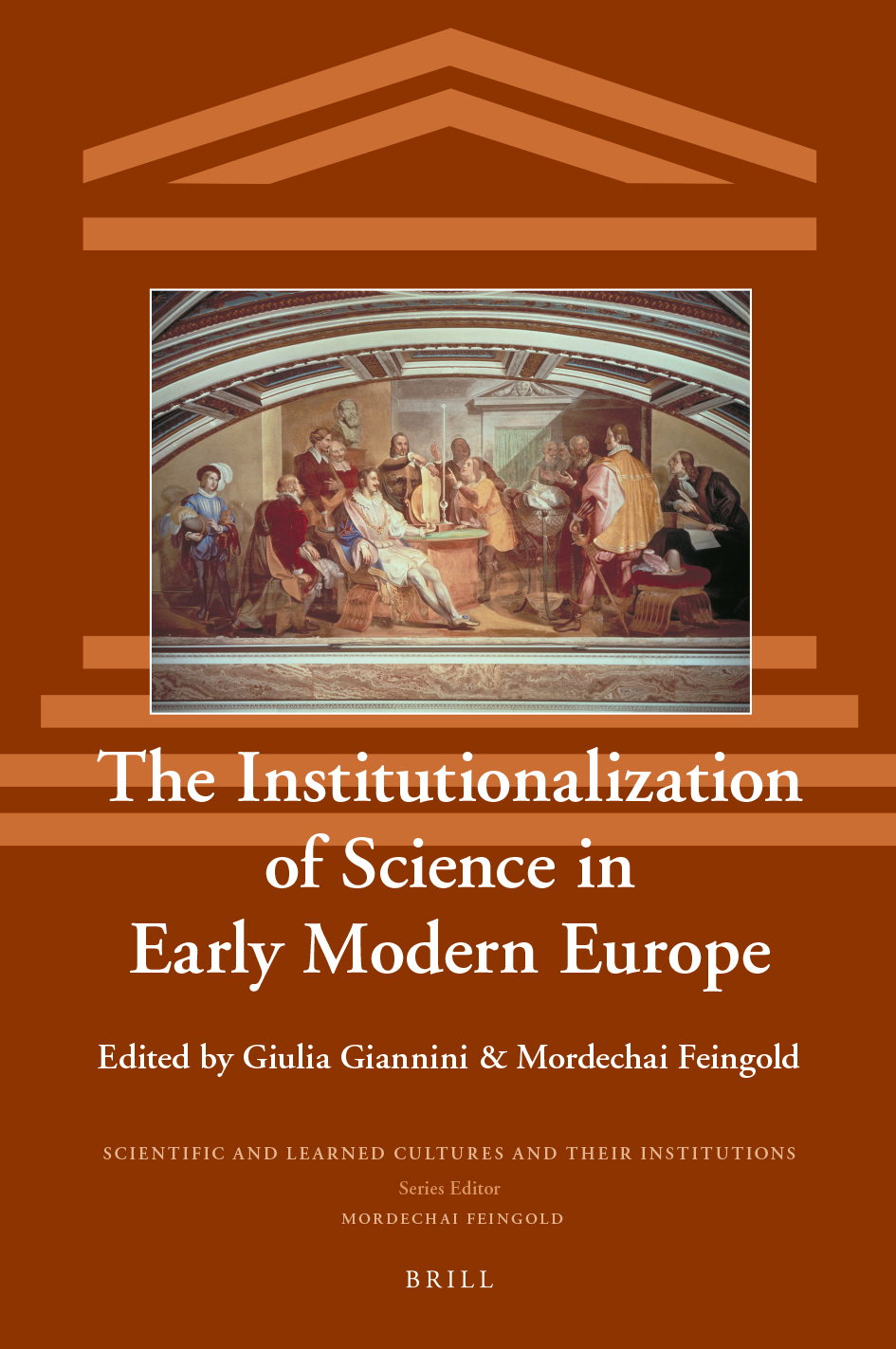
THE INSTITUTIONALIZATION OF SCIENCE IN EARLY MODERN EUROPE
Edited by Giulia Giannini and Mordechai Feingold, Brill, Scientific and Learned Cultures and Their Institutions, Volume 27, Leiden 2020, pp. 301.
This volume aims to furnish a broader framework for analyzing the scientific and institutional context that gave rise to scientific academies in Europe—including the Accademia del Cimento in Florence, the Royal Society in London, the Académie Royale des Sciences in Paris, and the Academia naturae curiosorumin Schweinfurt. The essays detail the multiple backgrounds that prompted 17th-century savants—from Italy to England, and from Poland to Portugal—to establish new forms of scientific organizations, in which to institutionalize collaborative research as well as modes of communication with like-minded individuals and associations.